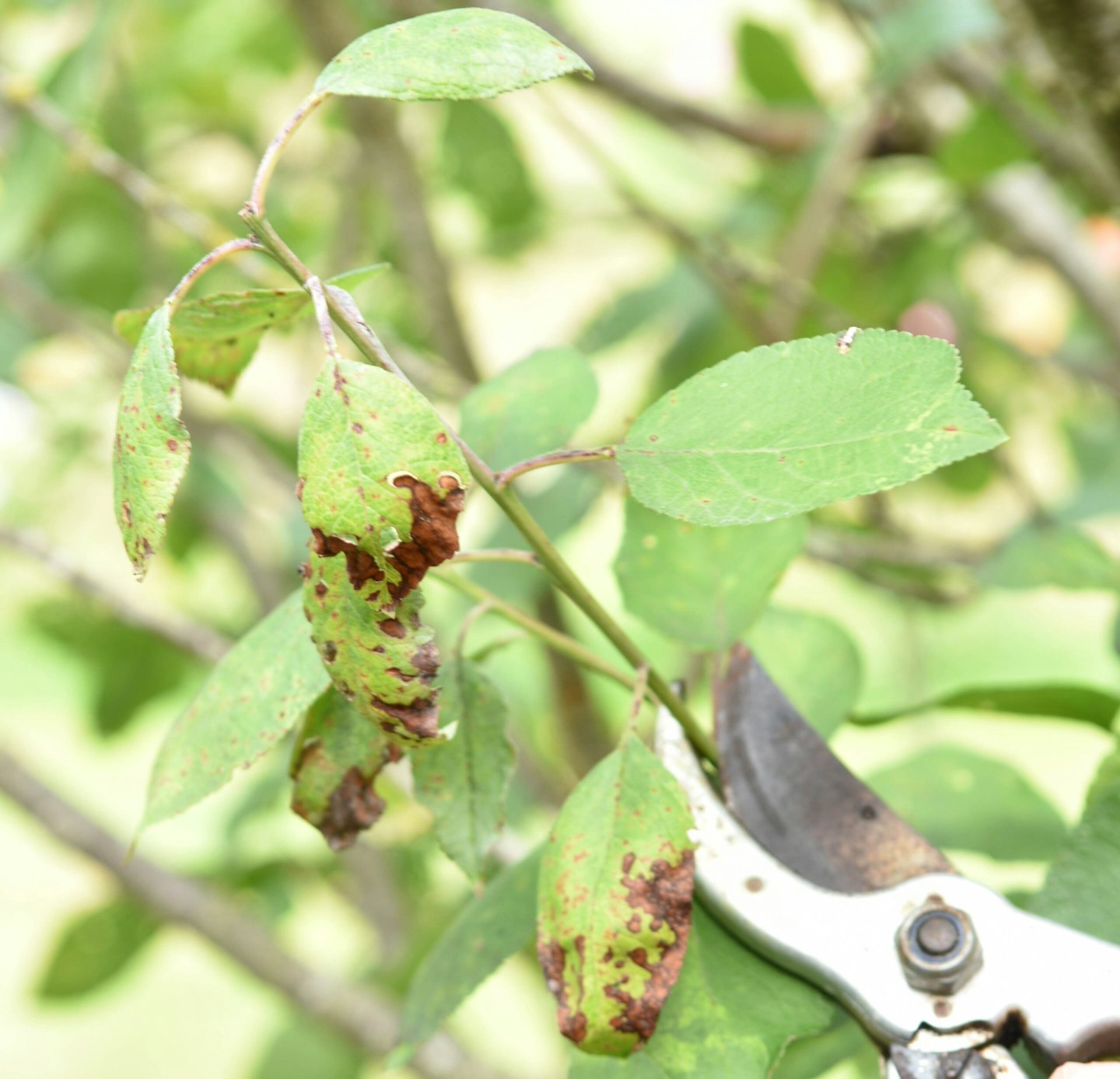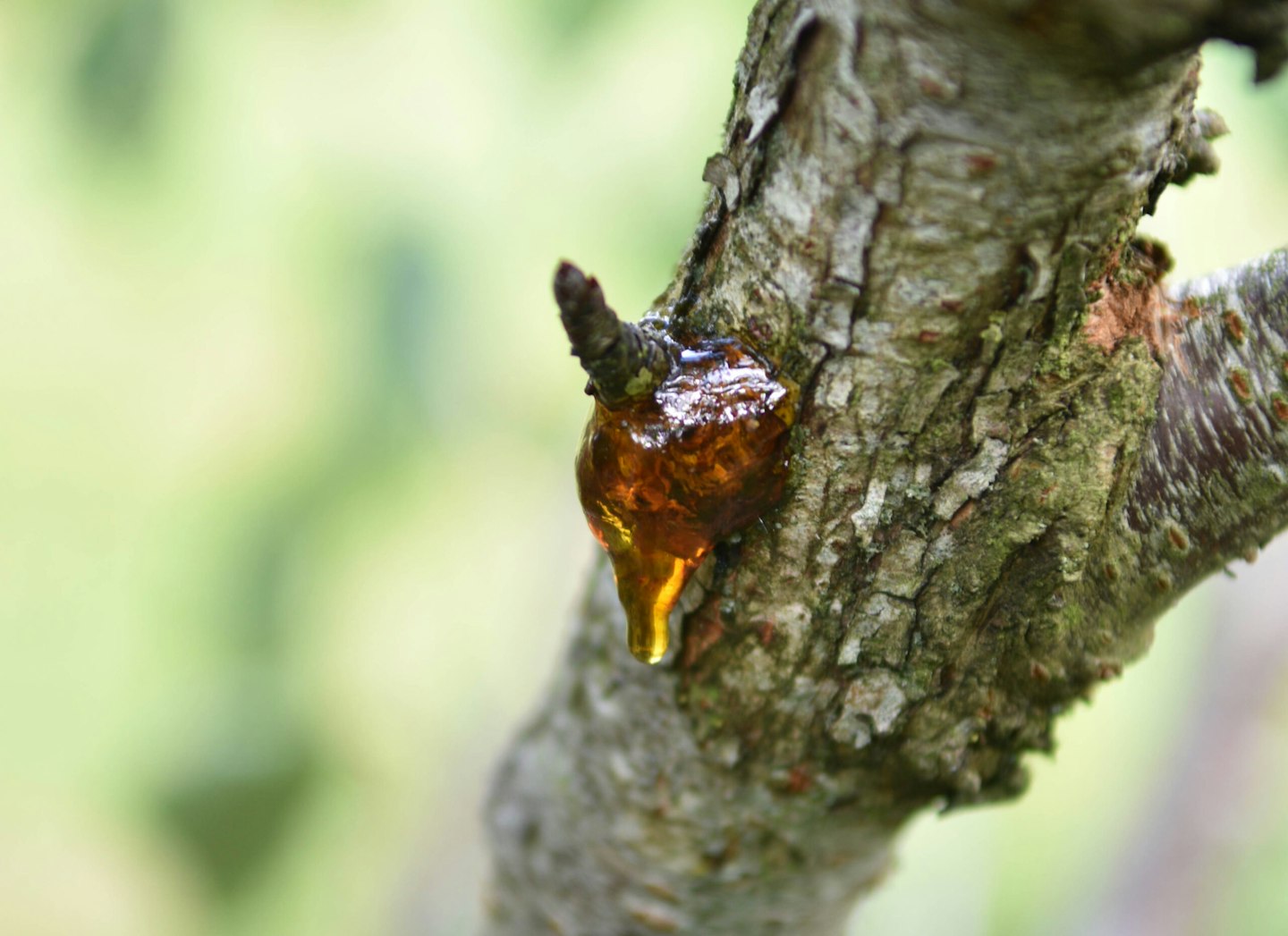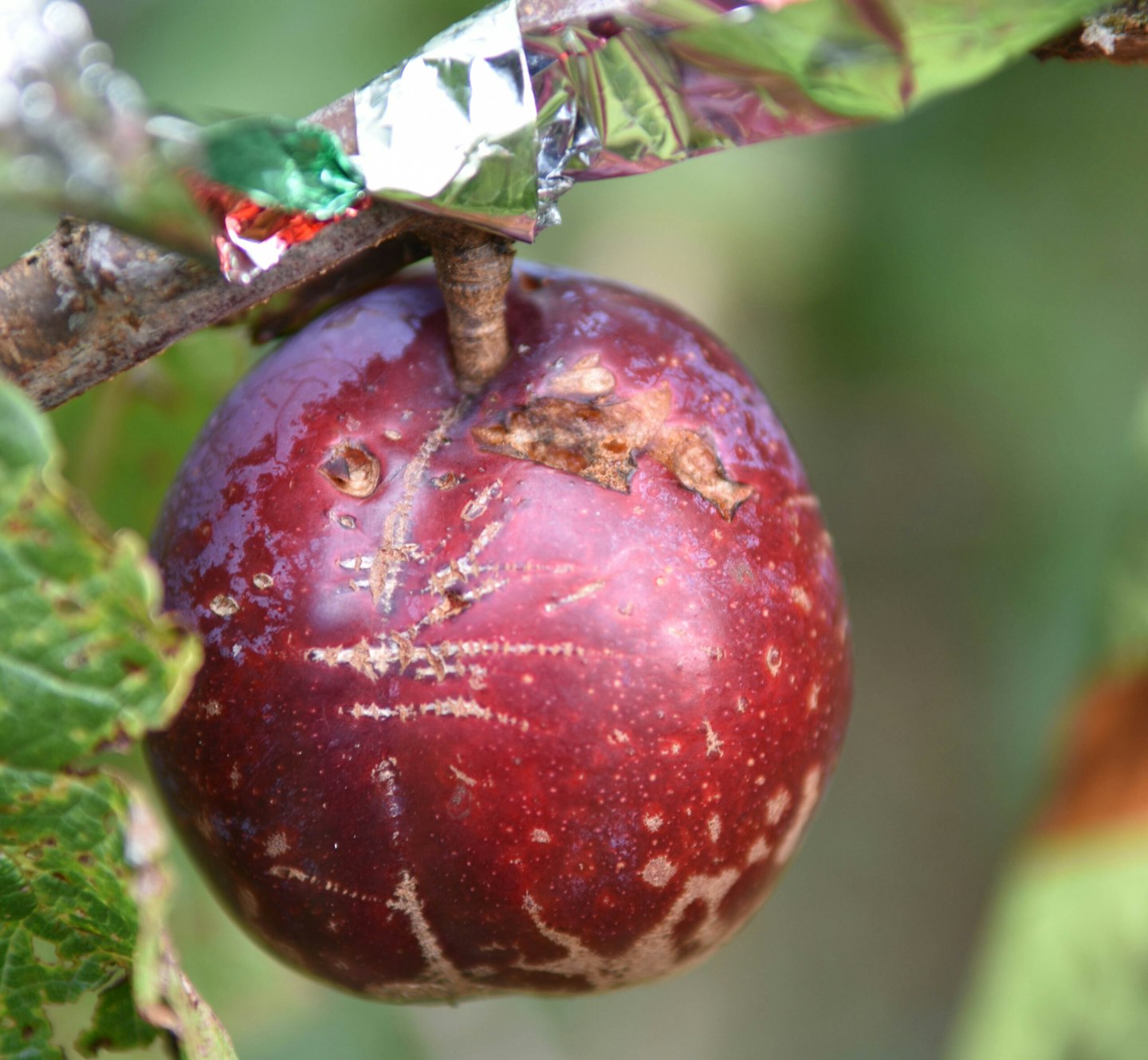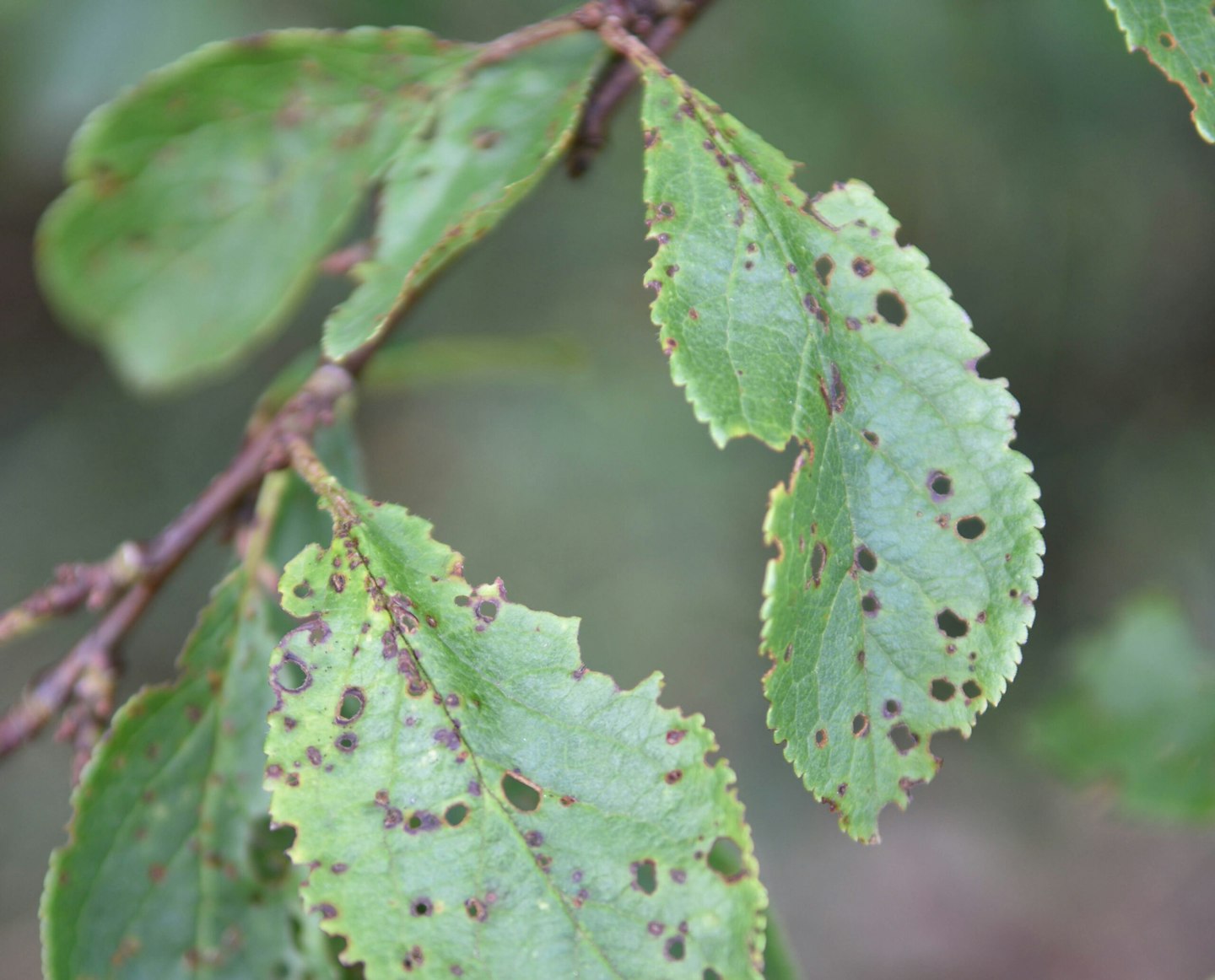Plums and damsons, like all stone fruits, should only be pruned while in leaf to prevent infection by silver leaf disease. Pruning should be kept to a minimum, but if necessary, it can be done now. You can easily remove badly crossed branches and stems with damaged bark caused by rubbing, though you may prefer to wait until after harvesting the fruit.
Any cuts larger than the diameter of a pencil should be treated with wound paint. Young shoots that have grown this year won’t carry fruit and can be shortened to help keep the tree compact. This may also reduce damage caused by plum aphids, which twist and crumple the leaves.
Plums are affected by several diseases, with aphids being the main pest. The most common disease is bacterial canker, which is especially problematic in wet years. It typically causes brown spots on the foliage that drop out, leaving a characteristic ‘shot hole’ appearance. This can lead to early leaf drop, but affected trees usually continue to live and crop.
Branches may ooze resin, which isn’t always a sign of canker as it can be natural. However, if the ooze comes from areas of sunken, dead bark, bacterial canker is likely the cause. If the dead bark spreads, it can kill the branch, so any badly affected areas and dead stems should be removed.
TOP TIPS
• Aphids cause leaves to curl and twist. Damage is largely cosmetic, but affected shoots can be shortened to tidy up plants.
• Gummosis can occur on healthy trees but if it’s associated with areas of dead, sunken bark the tree may be affected by bacterial canker.
• Birds will peck at fruits as they colour. Wasps then move in to feed. Shiny and reflective scarers may deter birds.
• Bacterial canker is common on plums and may eventually weaken trees. First signs are brown spots on leaves that drop out to produce holey leaves.




